Introduction
What is Cornbread Casserole Recipe?
Cornbread casserole recipe is a beloved dish that combines the classic flavors of cornbread with a rich, creamy filling. A cherished favorite among Southern households, this dish offers warmth and familiarity, now embraced nationwide as a beloved side. Its symphony of textures and flavors ensures it stands out on any dining table.
History and Popularity
The inception of cornbread casserole finds its roots intertwined with Southern culinary heritage, where cornbread holds a cherished position as a dietary mainstay. Over time, inventive cooks began adding ingredients like cream corn, cheese, and sour cream to create a more substantial dish. Today, it’s a favorite at family gatherings, potlucks, and especially during holidays like Thanksgiving. For an authentic Southern recipe, check out this Southern Living Cornbread Casserole Recipe.
Why You Should Try This Recipe
There are many reasons to love cornbread casserole. First, it’s incredibly easy to make, even for beginners. The ingredients are simple and typically found in most kitchens. Second, it’s versatile. You can easily adapt the recipe to suit your tastes or dietary needs. Finally, cornbread casserole is a crowd-pleaser. Its soothing taste and velvety consistency render it an impeccable accompaniment for every gathering. For individuals seeking a gluten-free alternative, consider this Gluten-Free Cornbread Casserole.
Regardless of your culinary expertise, trying out cornbread casserole is an essential culinary adventure. Its rich history, ease of preparation, and delicious taste make it a dish that everyone will enjoy.
The Basic Cornbread Casserole Recipe
Print
Classic Cornbread Casserole Recipe
- Total Time: 1 hour
- Yield: 8 servings 1x
- Diet: Vegetarian
Description
A simple and delicious cornbread casserole that combines the sweetness of corn with the rich flavor of cornbread. Perfect for any meal, this dish is a family favorite.
Ingredients
- ¼ pound butter, melted
- 1 (15 ounce) can whole kernel corn, drained
- 1 (15 ounce) can creamed corn
- 1 (8.5 ounce) package corn bread mix
- 1 ounce sour cream
Instructions
- Preheat the oven to 350°F (175°C).
- In a large bowl, combine the melted butter, whole kernel corn, creamed corn, corn bread mix, and sour cream. Mix well.
- Pour the mixture into a greased 9×13-inch baking dish.
- Bake in the preheated oven for 45-50 minutes, or until golden brown and set.
Notes
Ensure to let the cornbread casserole cool for a few minutes before serving to allow it to set properly.
- Prep Time: 10 minutes
- Cook Time: 50 minutes
- Category: Side Dish
- Method: Baking
- Cuisine: American
Nutrition
- Serving Size: 1 slice
- Calories: 320
- Sugar: 8g
- Sodium: 520mg
- Fat: 18g
- Saturated Fat: 10g
- Unsaturated Fat: 6g
- Trans Fat: 0g
- Carbohydrates: 36g
- Fiber: 2g
- Protein: 5g
- Cholesterol: 45mg
Keywords: Cornbread Casserole
For more creative variations and ideas, visit this Cornbread Casserole Variations.
STEPS
Step 1
Assemble all the ingredients. Set the oven to preheat at 350 degrees F (175 degrees C).
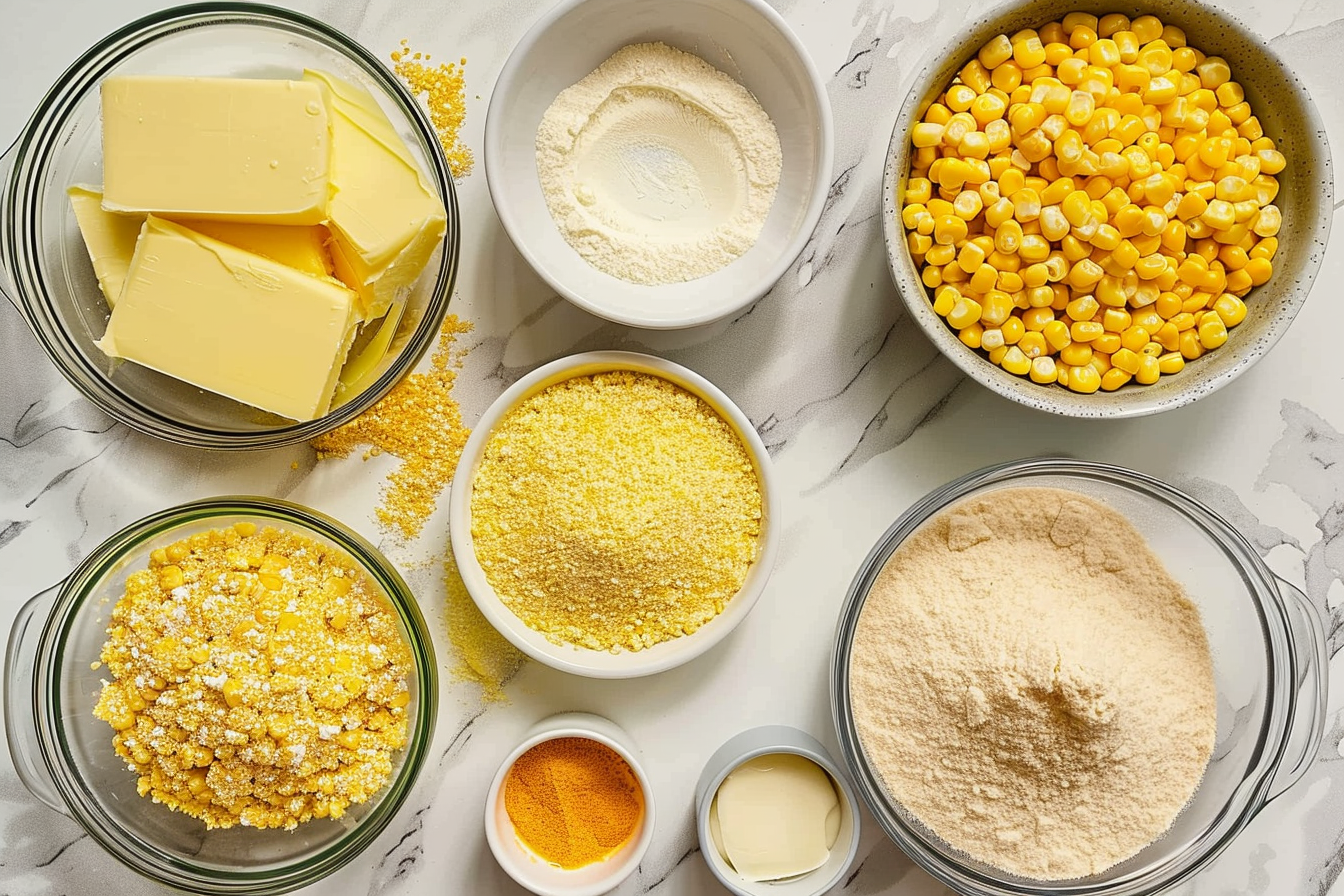
Step 2
In a mixing bowl, mix together the butter, whole corn, creamed corn, cornbread mix, and sour cream.

Step 3
Gently combine the ingredients until well mixed, then transfer the mixture into a 2-quart casserole dish.
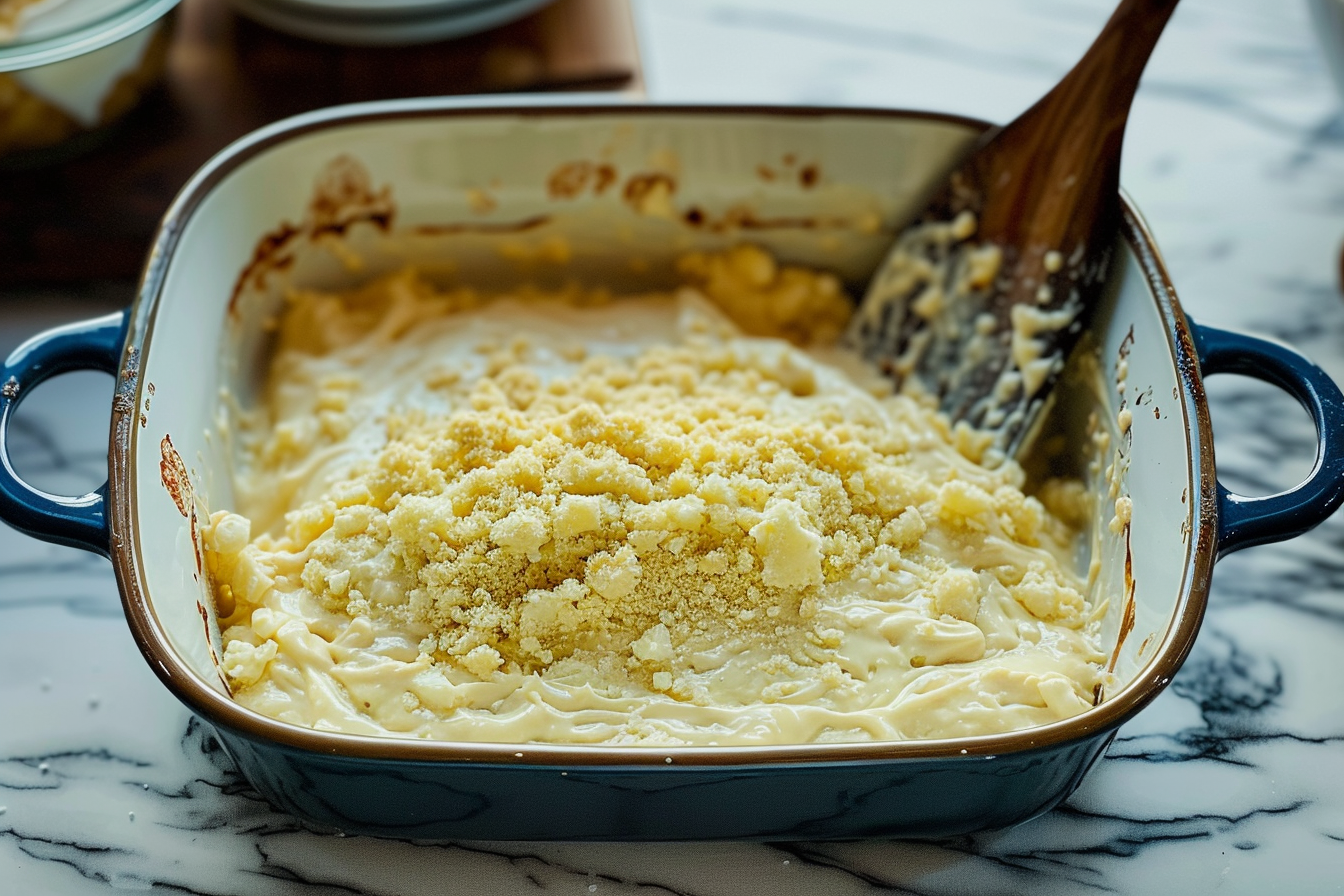
Step 4
Place in the preheated oven and bake for 1 hour.
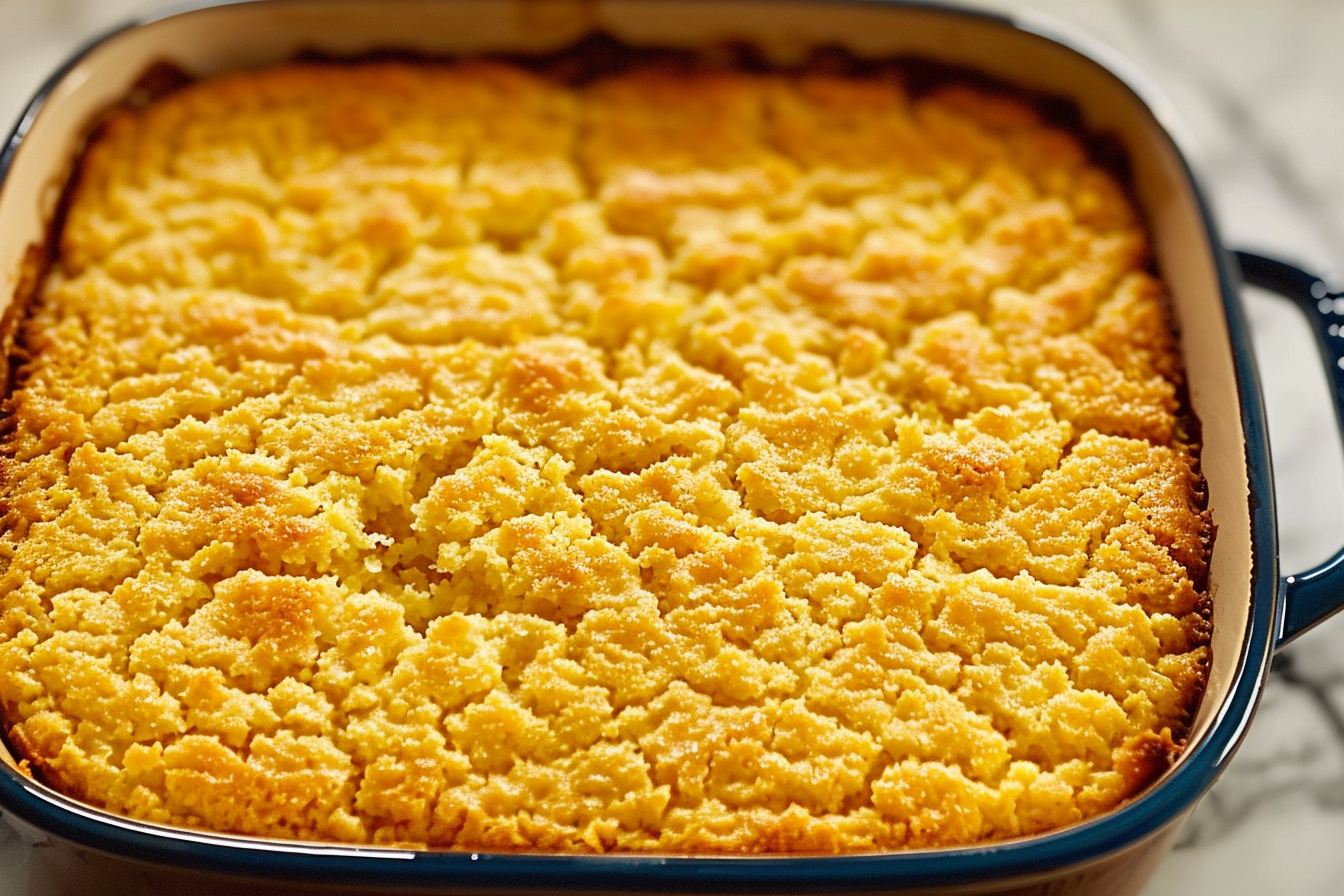
Advanced Techniques
Flavor Enhancements
To elevate your cornbread casserole recipe, consider incorporating some exciting flavor enhancements. Incorporating jalapeños infuses the dish with a fiery punch, ideal for spice enthusiasts seeking a tantalizing kick. If you prefer a smoky flavor, mix in some crumbled cooked bacon or smoked paprika. For a sweeter version, consider adding a touch of honey or maple syrup. These small additions can significantly change the overall taste, making your casserole unique.
Presentation Tips
A beautifully presented cornbread casserole can make it even more appealing. Before baking, sprinkle the top with extra shredded cheese and a few slices of jalapeños for a colorful finish. After baking, embellish with vibrant herbs such as cilantro or parsley to introduce a burst of color. Using a cast-iron skillet instead of a baking dish not only improves the presentation but also enhances the dish’s rustic charm.
Variations of Cornbread Casserole
Experimenting with different variations can make your cornbread casserole stand out. For a Mexican twist, add a cup of black beans, corn kernels, and a handful of chopped cilantro. For enthusiasts of cheesy delights, consider adding an additional cup of cheddar or Monterey Jack cheese to enhance the flavor profile. To create a vegetarian twist, sauté a medley of vegetables such as bell peppers, onions, and zucchini for added depth of flavor. These adaptations not only broaden the flavor spectrum but also boost the dish’s nutritional value.
Whether you’re adding heat with jalapeños, enhancing sweetness with honey, or experimenting with cheese and vegetables, these advanced techniques will help you create a memorable cornbread casserole. By using these tips, you can transform a simple recipe into a gourmet delight that will impress your guests and family alike. For more advanced recipes, visite cooking white.
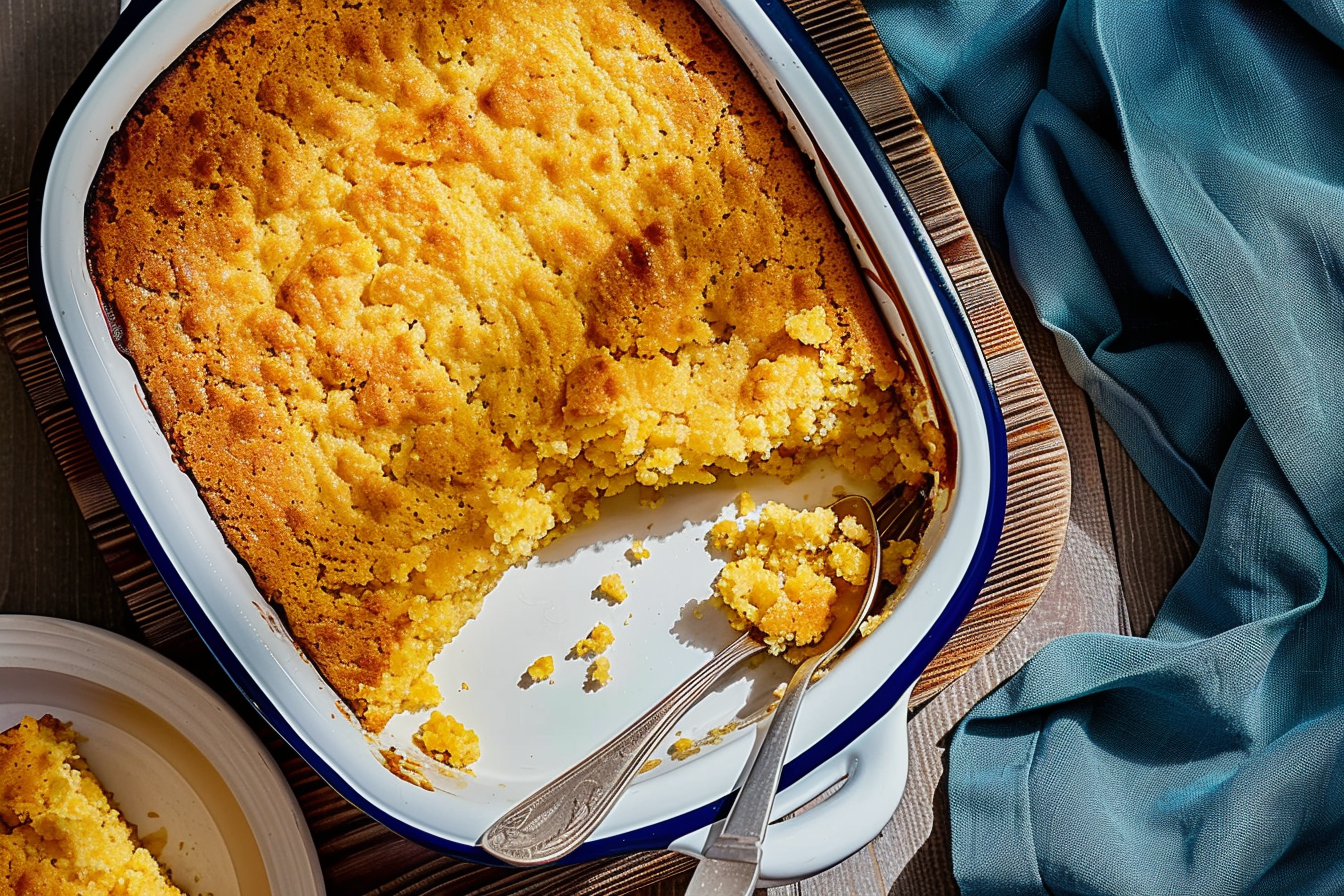
Maintenance Tips
Storage Guidelines
Properly storing your cornbread casserole ensures it stays fresh and delicious. After cooling, tightly seal the casserole with plastic wrap or transfer it to an airtight container for storage. Keep it refrigerated for a maximum of four days. To extend its shelf life, individually wrap portions in plastic wrap before placing them in a freezer-safe bag for freezing. This method preserves the quality and makes reheating easier.
Reheating Techniques
Reheating your cornbread casserole properly maintains its texture and flavor. For best results, reheat in the oven.
Freezing Instructions
To freeze cornbread casserole recipe, follow these simple steps. Following baking, allow the casserole ample time to cool to room temperature. Slice it into individual portions to simplify the reheating process. Ensure each piece is tightly wrapped in plastic wrap followed by aluminum foil to safeguard against freezer burn. Mark the packages with the date and their contents for easy identification. Arrange them in a solitary row in the freezer, where they can remain for a maximum of three months. When it’s time to enjoy, allow it to thaw overnight in the refrigerator prior to reheating.
These maintenance tips ensure your cornbread casserole recipe remains flavorful and fresh, whether you store it in the fridge or freezer. To savor this delightful dish to its fullest, it’s crucial to employ proper storage and reheating methods. Adhering to these instructions ensures you can enjoy your casserole at any time without sacrificing its flavor or quality.
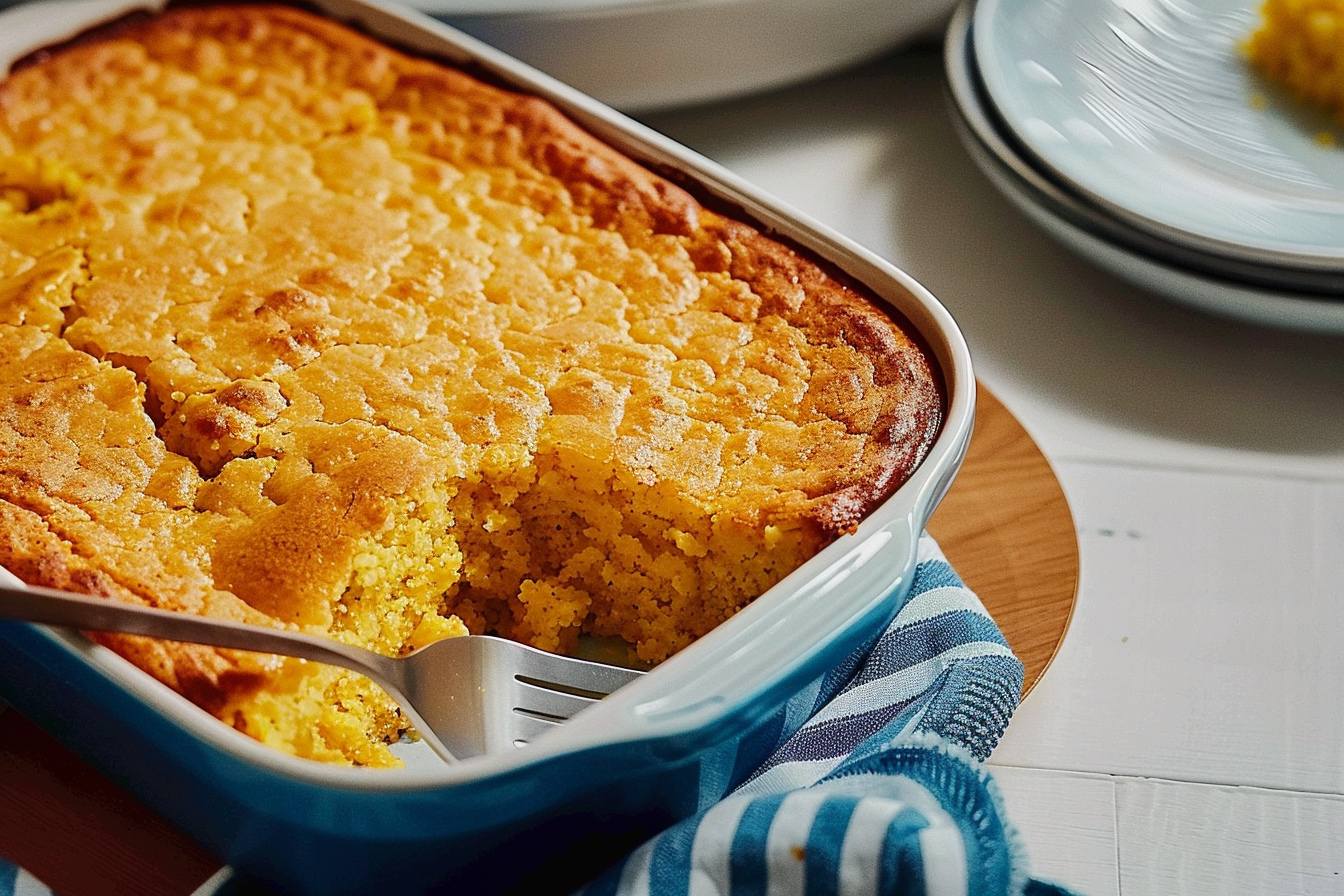
Dietary Adaptations
Gluten-Free Cornbread Casserole
Creating a gluten-free cornbread casserole recipe is simple and delicious. Swap out traditional flour with a gluten-free mixture, making sure it includes xanthan gum for optimal texture. Additionally, check all other ingredients, like baking powder and cornmeal, to confirm they are gluten-free. This modification preserves the dish’s timeless taste while catering to individuals with gluten sensitivities.
Vegan and Vegetarian Options
To create a vegan version of cornbread casserole, substitute eggs with flax eggs (combine 1 tablespoon ground flaxseed with 3 tablespoons water per egg). Opt for non-dairy alternatives such as plant-based milk and vegan butter in lieu of dairy products. Incorporate vegan cheese to maintain the creamy texture. For a vegetarian version, ensure all ingredients are free from animal products, but feel free to add vegetables like bell peppers, onions, and zucchini for extra nutrition and flavor.
Low-Calorie Modifications
To create a lower-calorie cornbread casserole recipe, make a few strategic substitutions. Use low-fat or skim milk instead of whole milk, and replace butter with a reduced-calorie margarine or apple sauce. Decrease the amount of cheese or use a reduced-fat version. Incorporating vegetables not only enhances the nutritional content but also increases the dish’s volume, imparting a greater sense of fullness without significantly increasing calorie intake.
These dietary adjustments guarantee that individuals of all dietary requirements or preferences can relish a scrumptious cornbread casserole. Whether you’re avoiding gluten, embracing a vegan lifestyle, or looking to reduce calorie intake, these modifications will help you create a satisfying and flavorful dish. Adapting recipes to fit different diets doesn’t mean sacrificing taste. With these tips, your cornbread casserole will remain a crowd-pleaser for any occasion.
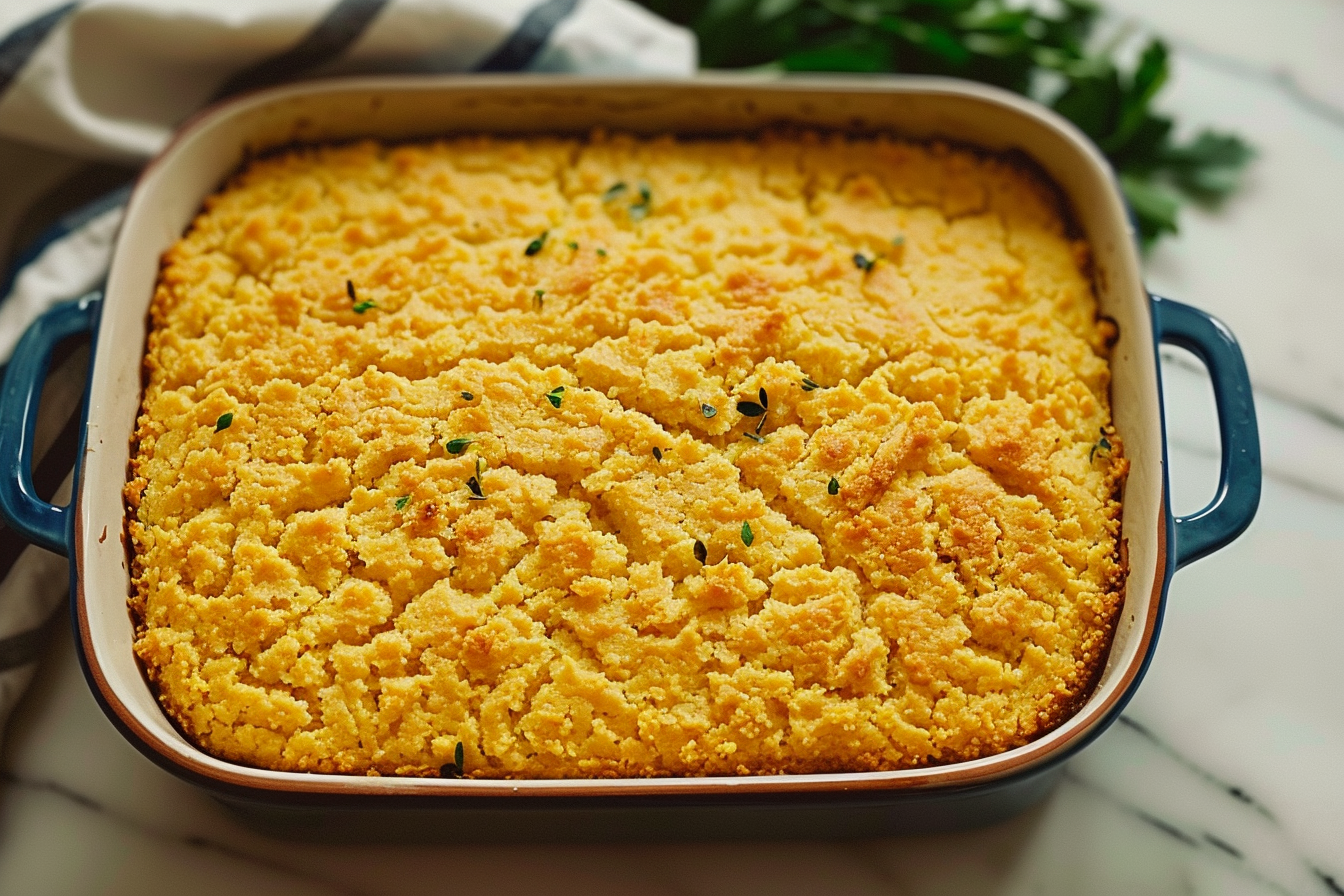
Frequently Asked Questions About Carnbread Casserole
How does Corn Casserole Differ from Cornbread?
Cornbread stands as a timeless baked loaf predominantly crafted from cornmeal. It has a crumbly texture and is often served as a side dish. On the other hand, cornbread casserole combines cornbread with additional ingredients like cream-style corn, cheese, and sometimes sour cream, resulting in a creamier, more substantial dish. The casserole version offers a richer flavor and a moist, tender texture, making it a heartier option.
What to Eat with Cornbread Casserole?
Cornbread casserole pairs well with a variety of main dishes. It’s a perfect side for barbecue meats like ribs or pulled pork, and it complements fried chicken beautifully. To lighten your meal, pair it with a crisp green salad or a steaming bowl of vegetable soup. Its versatility makes it a great addition to holiday feasts, especially during Thanksgiving, where it pairs well with turkey and stuffing.
What are the Four Key Elements of a Casserole?
A good casserole typically includes four main components:
- Base: The primary ingredient, such as pasta, rice, or in this case, cornbread.
- Binder: A creamy element like cream soup, cheese, or eggs that holds the dish together.
- Filler: Vegetables, meats, or beans that add bulk and flavor.
- Topping: A layer that adds texture, often cheese, breadcrumbs, or crispy onions.
What Makes Cornbread Exceptional?
Cornbread is cherished for its distinctive melding of flavors and textures. Its slightly sweet taste contrasts beautifully with savory dishes. The coarse texture of cornmeal gives it a pleasant bite, and it absorbs flavors well, making it versatile for many meals. Moreover, cornbread boasts simplicity and speed in its preparation, rendering it a convenient choice for cooks at home.
Exploring these frequently asked questions can deepen your comprehension of cornbread casserole and its versatility in meal planning. Whether you’re curious about the differences between cornbread and corn casserole or looking for serving suggestions, these answers provide valuable insights.
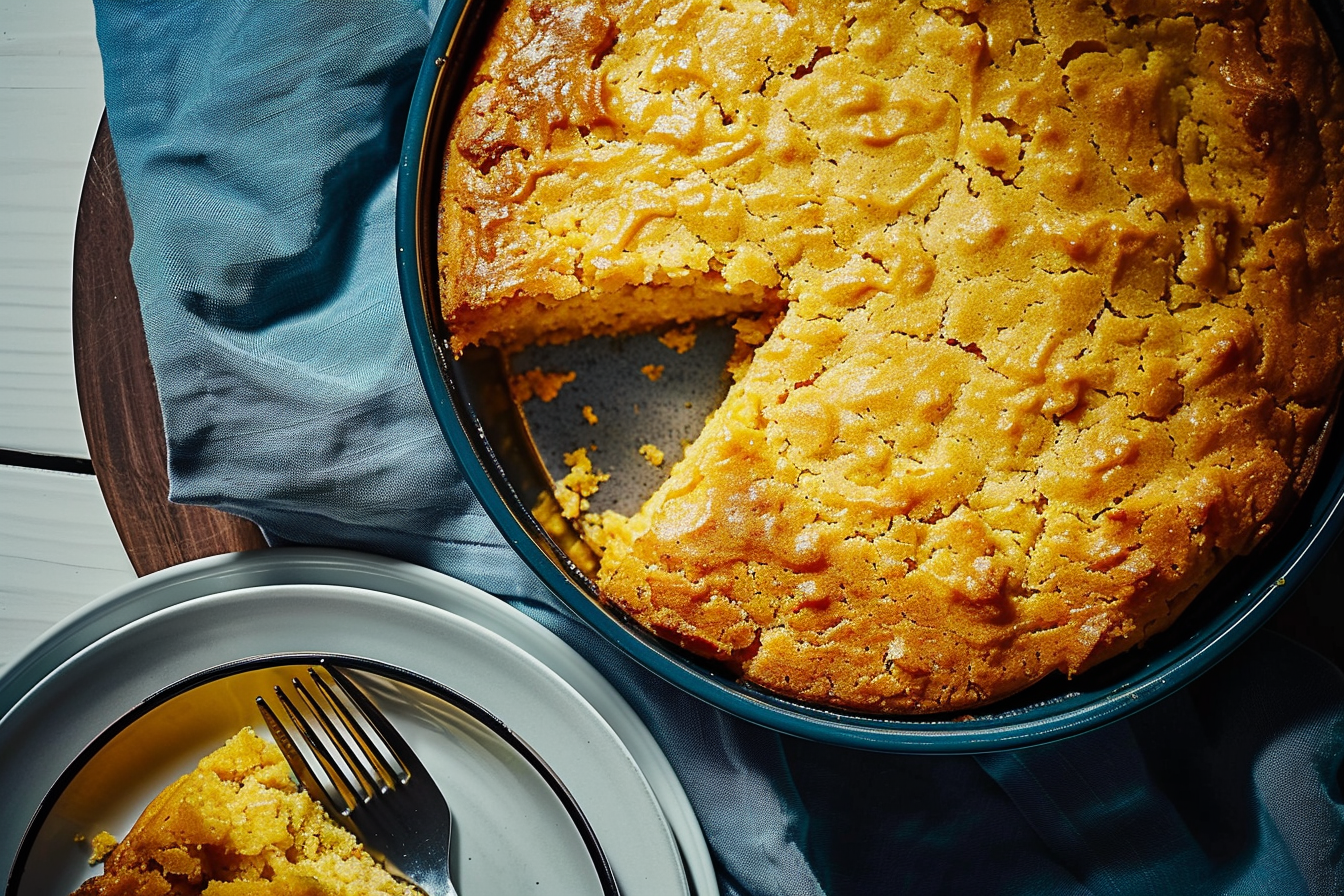
Conclusion
The Delight of Cornbread Casserole Recipe
Cornbread casserole is a dish that brings together the best of both worlds: the comforting, crumbly texture of cornbread and the creamy, rich flavors of a casserole. Not just delicious, this recipe is adaptable, earning it a cherished spot in countless households. Whether you’re preparing it for a holiday feast or a weeknight dinner, this dish is sure to please everyone at the table.
Versatility in Every Bite
One of the great things about cornbread casserole is its adaptability. Adjustments to the fundamental recipe can accommodate a range of dietary requirements and flavor inclinations. From gluten-free versions to vegan adaptations, there’s a way to make this dish work for everyone. Adding different ingredients like jalapeños for heat, extra cheese for creaminess, or vegetables for a nutritional boost can keep the recipe exciting and fresh.
Perfect for Any Occasion
Cornbread casserole shines as a side dish for many occasions. Its decadent flavors harmonize with an extensive array of main dishes, spanning from grilled meats to refreshing salads. Moreover, it’s a hit at potlucks and holiday gatherings, offering a dish that’s easy to share and always well-received. Its knack for complementing a variety of dishes renders it a superb option for versatile meal preparation.
Simple Yet Satisfying
The simplicity of cornbread casserole is part of its charm. The ingredients are straightforward and typically found in most kitchens, yet the result is a dish that’s both hearty and satisfying. Its simplicity in preparation ensures that even those new to cooking can attain delightful outcomes. Moreover, the casserole can be made ahead of time, freeing you up to focus on other parts of the meal.
Embrace the Tradition
By incorporating cornbread casserole into your regular meal rotation, you are embracing a delicious tradition that spans generations. Beyond mere sustenance, this dish serves as a conduit for bonding with cherished ones and commemorating shared experiences. Whether you adhere to the traditional method or venture into uncharted culinary territory, cornbread casserole is destined to carve out a special place in your kitchen repertoire.
In conclusion, cornbread casserole is a versatile, satisfying, and easy-to-make dish that deserves a spot on your dining table. Its ability to adapt to different tastes and dietary needs, coupled with its rich, comforting flavors, makes it a timeless favorite. Savor the joyous occasion of crafting and relishing this splendid dish alongside your loved ones.
